
hal-9100
Edge full-stack LLM platform. Written in Rust
Stars: 353
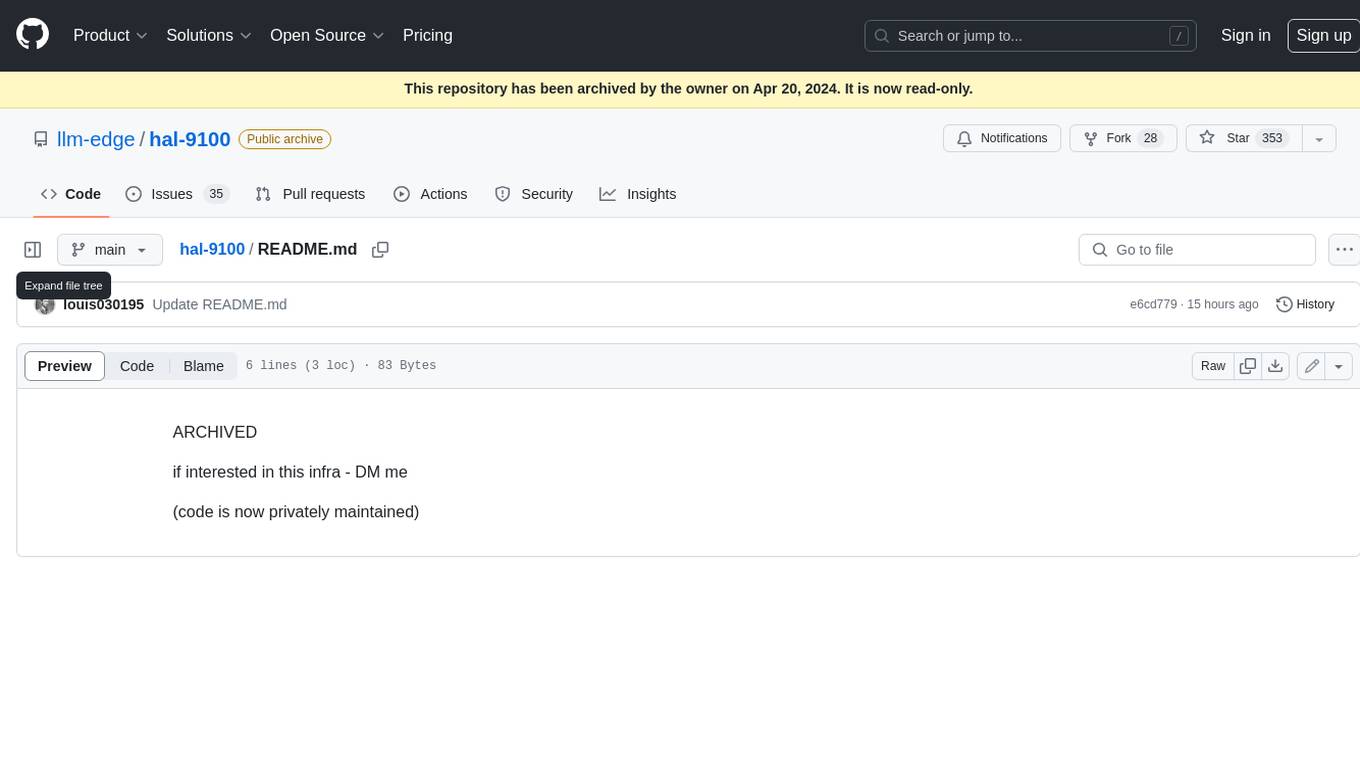
This repository is now archived and the code is privately maintained. If you are interested in this infrastructure, please contact the maintainer directly.
README:
🖼️ Infra ✨ Feature? ❤️🩹 Bug? 📞 Help?
- [x] Code Interpreter: Generate and runs Python code in a sandboxed environment autonomously. (beta)
- [x] Knowledge Retrieval: Retrieves external knowledge or documents autonomously.
- [x] Function Calling: Defines and executes custom functions autonomously.
- [x] Actions: Execute requests to external APIs autonomously.
- [x] Files: Supports a range of file formats.
- [x] OpenAI compatible: Works with OpenAI (Assistants) SDK
- You want to increase customization (e.g. use your own models, extend the API, etc.)
- You work in a data-sensitive environment (healthcare, IoT, military, law, etc.)
- Your product does have poor or no internet access (military, IoT, edge, extreme environment, etc.)
- (not our main focus) You operate on a large scale and want to reduce your costs
- (not our main focus) You operate on a large scale and want to increase your speed
First, our definition of Software 3.0, as it is a loaded term: Software 3.0 is the bridge connecting the cognitive capabilities of Large Language Models with the practical needs of human digital activity. It is a comprehensive approach that allows LLMs to:
- perform the same activity (or better) on the digital world than humans
- generally, allow the user to perform more operations without conscious effort
HAL-9100 is in continuous development, with the aim of always offering better infrastructure for Edge Software 3.0. To achieve this, it is based on several principles that define its functionality and scope.
Less prompt is more
As few prompts as possible should be hard-coded into the infrastructure, just enough to bridge the gap between Software 1.0 and Software 3.0 and give the client as much control as possible on the prompts.
Edge-first
HAL-9100 does not require internet access by focusing on open source LLMs. Which means you own your data and your models. It runs on a Raspberry PI (LLM included).
OpenAI-compatible
OpenAI spent a large amount of the best brain power to design this API, which makes it an incredible experience for developers. Support for OpenAI LLMs are not a priority at all though.
Reliable and deterministic
HAL-9100 focus on reliability and being as deterministic as possible by default. That's why everything has to be tested and benchmarked.
Flexible
A minimal number of hard-coded prompts and behaviors, a wide range of models, infrastructure components and deployment options and it play well with the open-source ecosystem, while only integrating projects that have stood the test of time.
Get started in less than a minute through GitHub Codespaces:
Or:
git clone https://github.com/llm-edge/hal-9100
cd hal-9100To get started quickly, let's use Anyscale API.
Get an API key from Anyscale. You can get it here. Replace in hal-9100.toml the model_api_key with your API key.
Usage w/ ollama
- use
model_url = "http://localhost:11434/v1/chat/completions" - set
gemma:2bin examples/quickstart.js - and run
ollama run gemma:2b & && docker compose --profile api -f docker/docker-compose.yml up
Install OpenAI SDK: npm i openai
Start the infra:
docker compose --profile api -f docker/docker-compose.yml upRun the quickstart:
node examples/quickstart.jsIs there a hosted version?
No. HAL-9100 is not a hosted service. It's a software that you can deploy on your infrastructure. We can help you deploy it on your infrastructure. Contact us.
Which LLM API can I use?
Examples of LLM APIs that does support OpenAI API-like, that you can use:
- ollama
- MLC-LLM
- FastChat (good if you have a mac)
- vLLM (good if you have a modern gpu)
- Perplexity API
- Mistral API
- anyscale
- together ai
We recommend these models:
- mistralai/Mixtral-8x7B-Instruct-v0.1
- mistralai/mistral-7b
Other models have not been extensively tested and may not work as expected, but you can try them.
What's the difference with LangChain?
1. LangChain spans proprietary LLM and open source, among the thousands of things it spans. HAL-9100 laser focuses on Software 3.0 for the edge.- You can write AI products in 50 lines of code instead of 5000 and having to learn a whole new abstraction
Are you related to OpenAI?
No.I don't use Assistants API. Can I use this?
We recommend switching to the Assistants API for a more streamlined experience, allowing you to focus more on your product than on infrastructure.Does the Assistants API support audio and images?
Images soon, working on it.For Tasks:
Click tags to check more tools for each tasksFor Jobs:
Alternative AI tools for hal-9100
Similar Open Source Tools

hal-9100
This repository is now archived and the code is privately maintained. If you are interested in this infrastructure, please contact the maintainer directly.
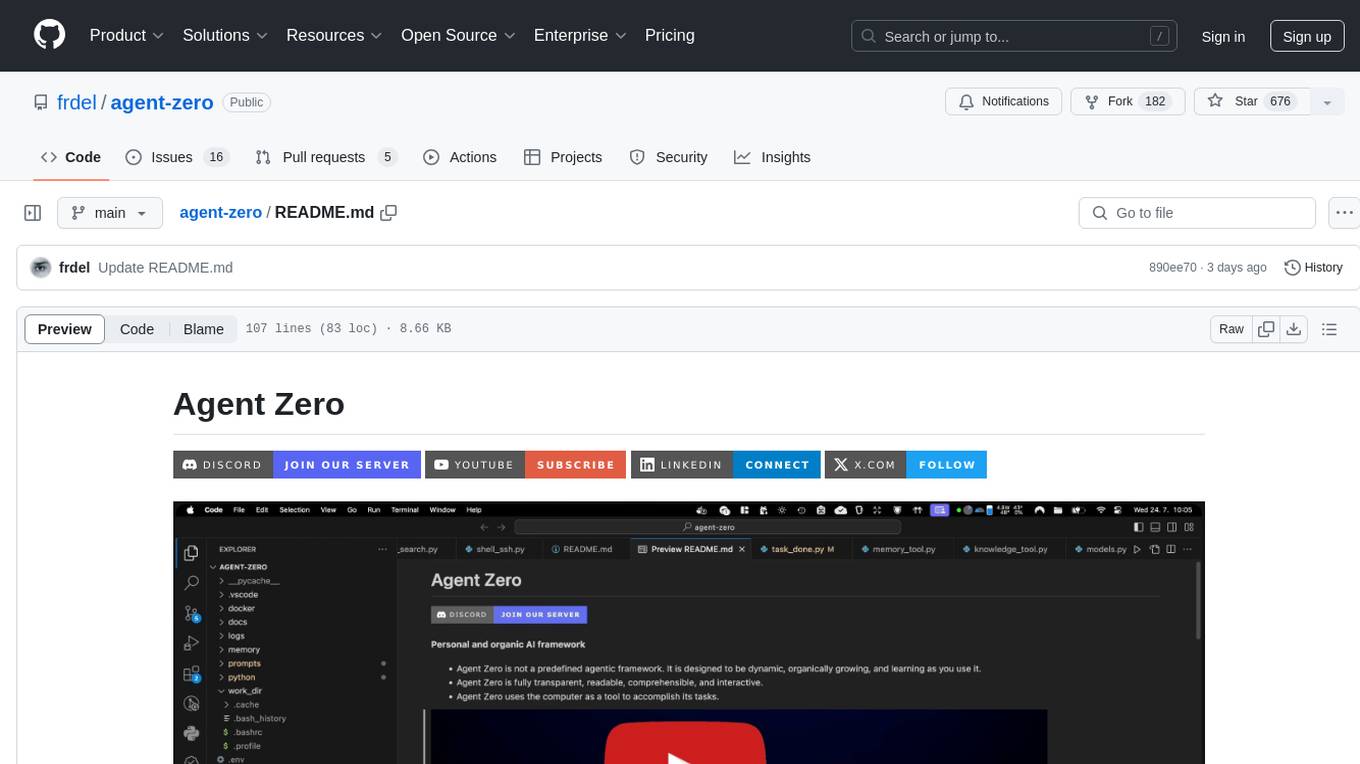
agent-zero
Agent Zero is a personal and organic AI framework designed to be dynamic, organically growing, and learning as you use it. It is fully transparent, readable, comprehensible, customizable, and interactive. The framework uses the computer as a tool to accomplish tasks, with no single-purpose tools pre-programmed. It emphasizes multi-agent cooperation, complete customization, and extensibility. Communication is key in this framework, allowing users to give proper system prompts and instructions to achieve desired outcomes. Agent Zero is capable of dangerous actions and should be run in an isolated environment. The framework is prompt-based, highly customizable, and requires a specific environment to run effectively.
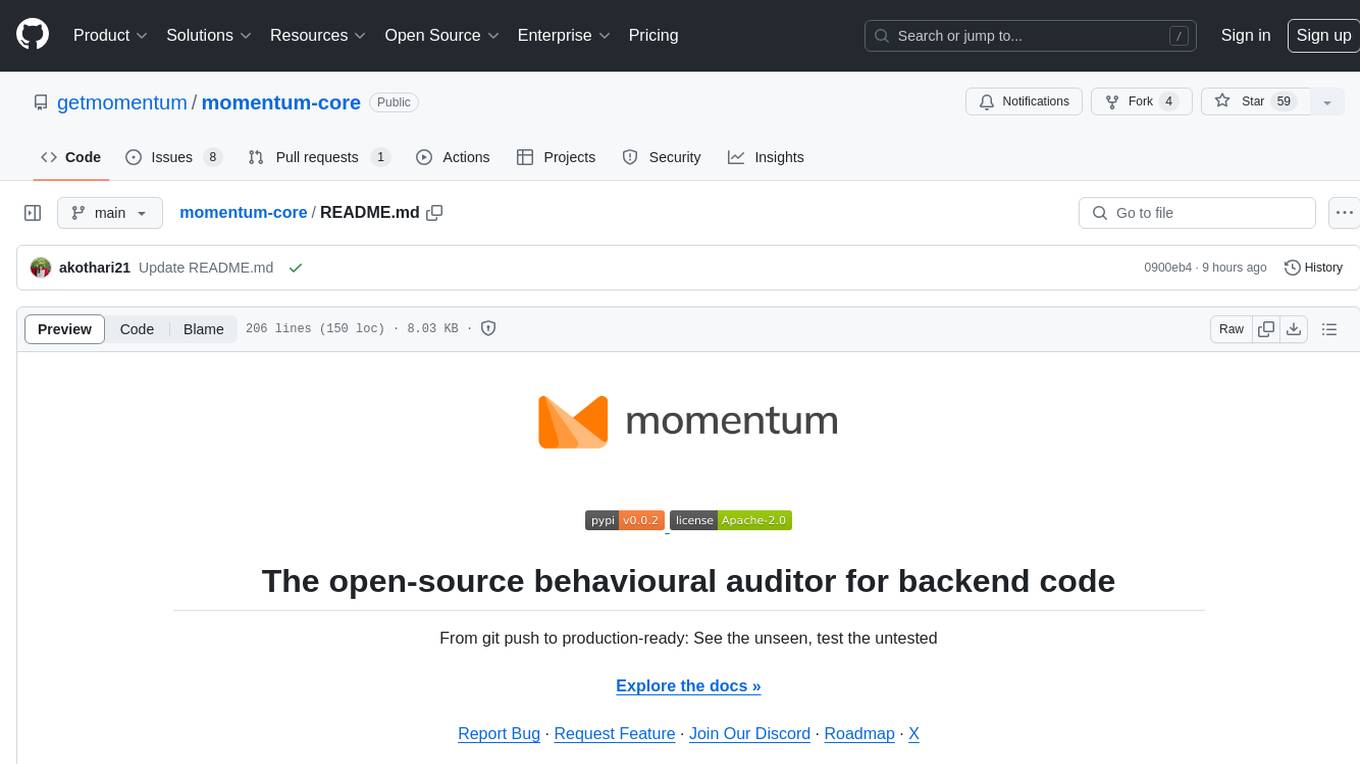
momentum-core
Momentum is an open-source behavioral auditor for backend code that helps developers generate powerful insights into their codebase. It analyzes code behavior, tests it at every git push, and ensures readiness for production. Momentum understands backend code, visualizes dependencies, identifies behaviors, generates test code, runs code in the local environment, and provides debugging solutions. It aims to improve code quality, streamline testing processes, and enhance developer productivity.
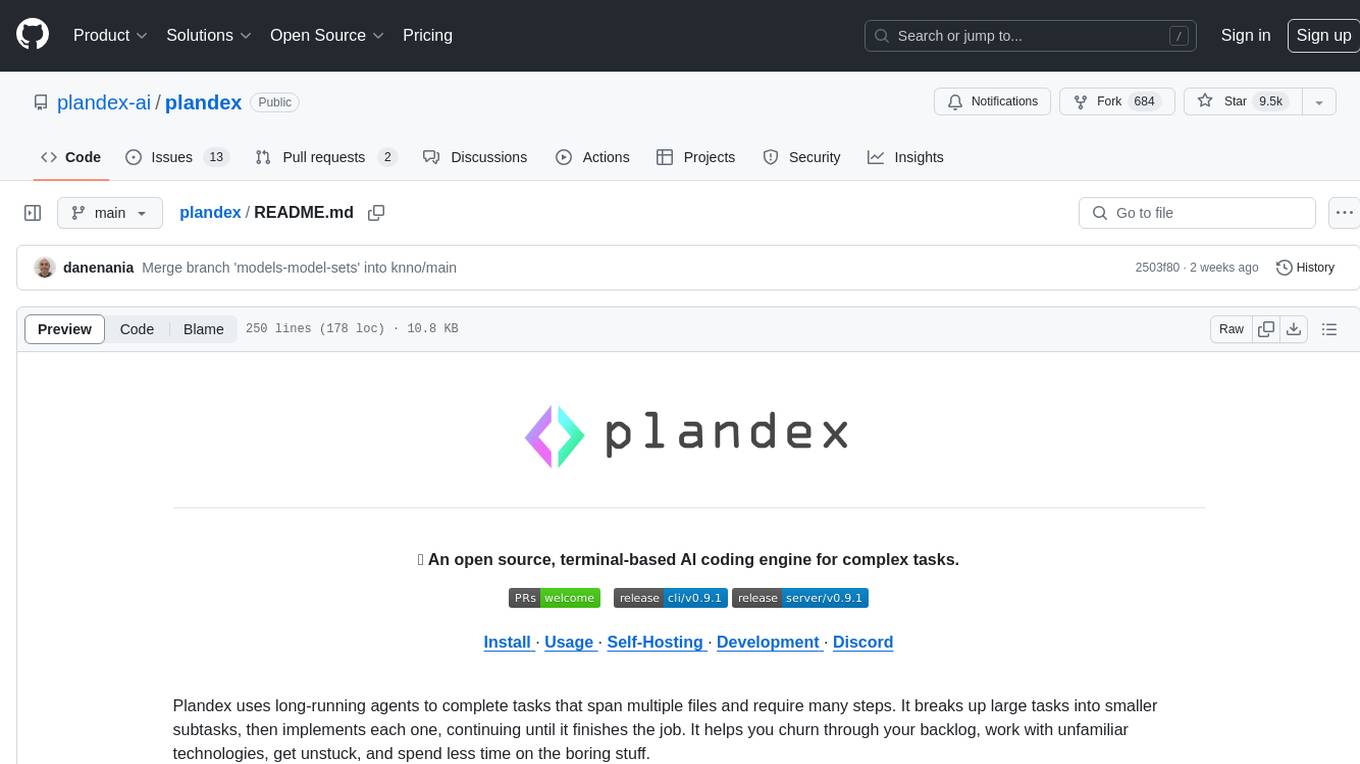
plandex
Plandex is an open source, terminal-based AI coding engine designed for complex tasks. It uses long-running agents to break up large tasks into smaller subtasks, helping users work through backlogs, navigate unfamiliar technologies, and save time on repetitive tasks. Plandex supports various AI models, including OpenAI, Anthropic Claude, Google Gemini, and more. It allows users to manage context efficiently in the terminal, experiment with different approaches using branches, and review changes before applying them. The tool is platform-independent and runs from a single binary with no dependencies.
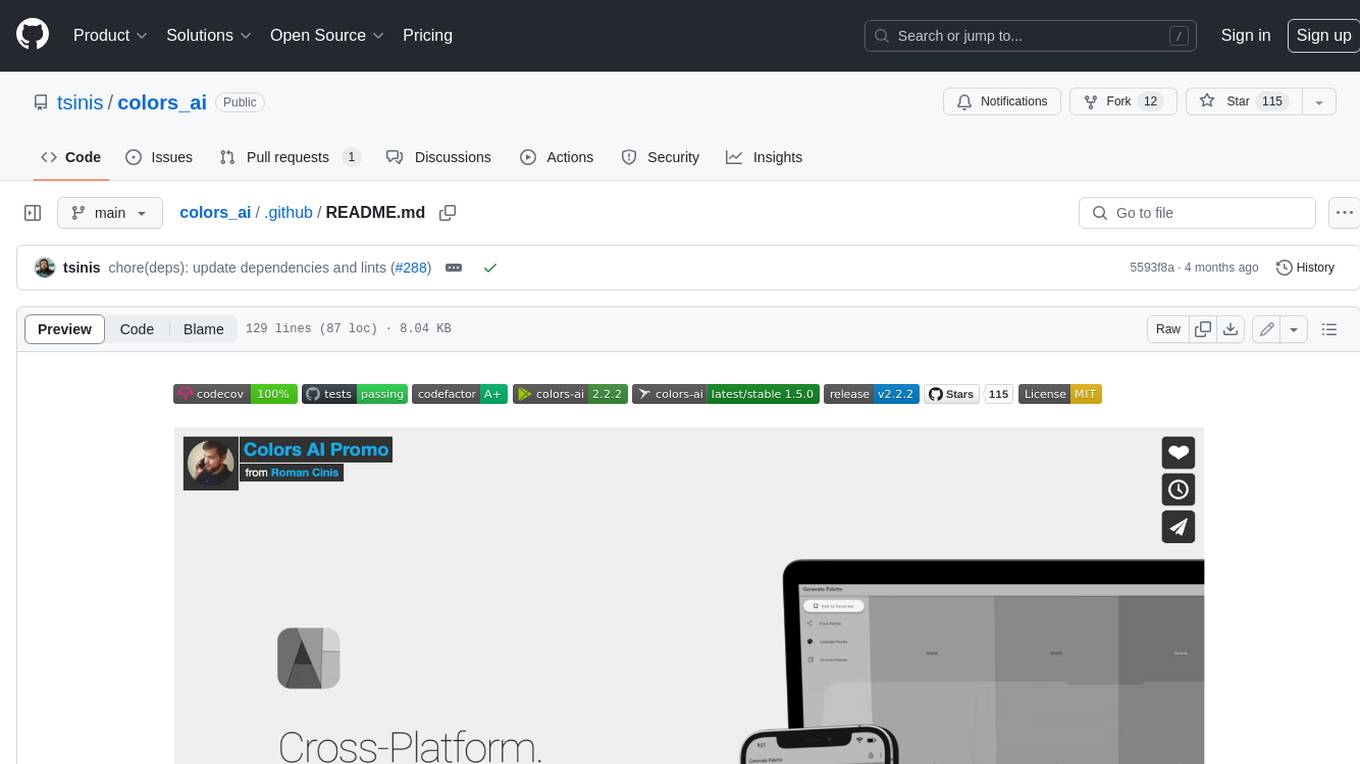
colors_ai
Colors AI is a cross-platform color scheme generator that uses deep learning from public API providers. It is available for all mainstream operating systems, including mobile. Features: - Choose from open APIs, with the ability to set up custom settings - Export section with many export formats to save or clipboard copy - URL providers to other static color generators - Localized to several languages - Dark and light theme - Material Design 3 - Data encryption - Accessibility - And much more
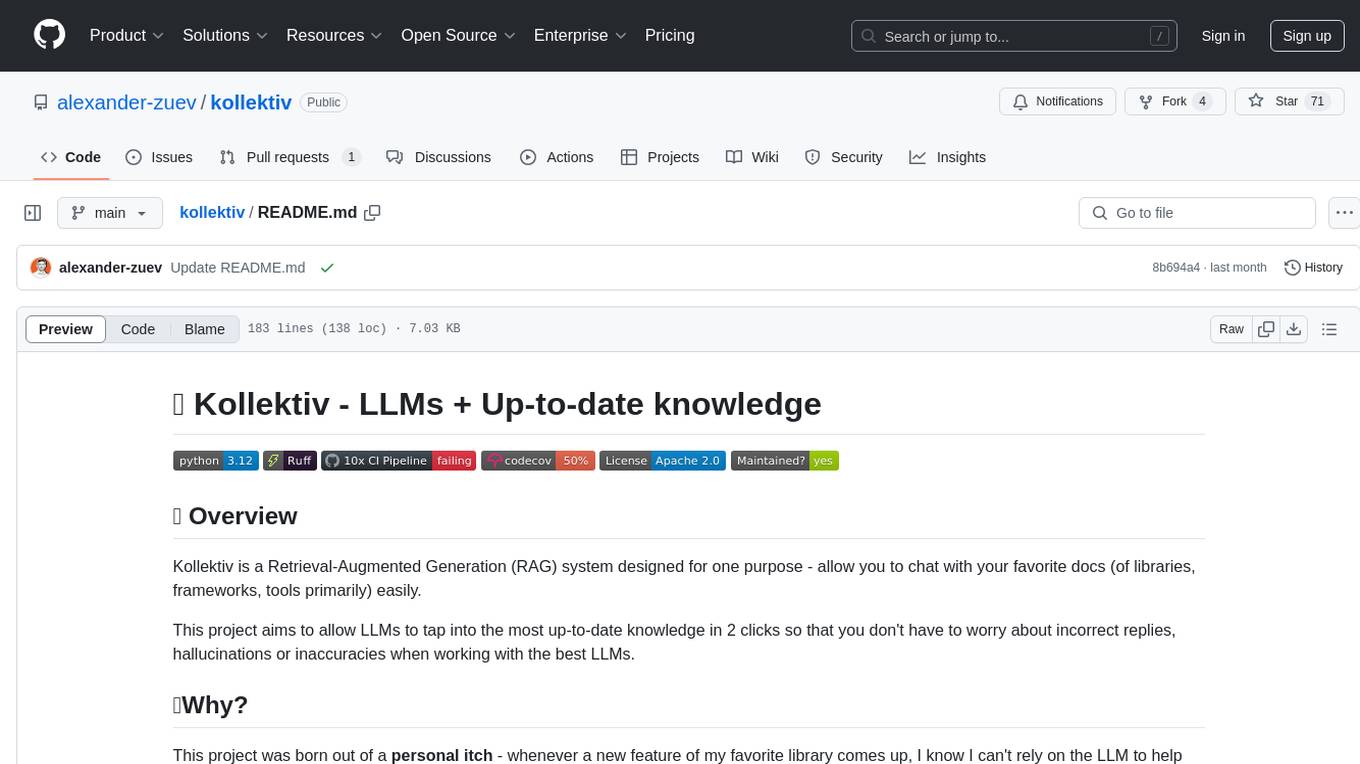
kollektiv
Kollektiv is a Retrieval-Augmented Generation (RAG) system designed to enable users to chat with their favorite documentation easily. It aims to provide LLMs with access to the most up-to-date knowledge, reducing inaccuracies and improving productivity. The system utilizes intelligent web crawling, advanced document processing, vector search, multi-query expansion, smart re-ranking, AI-powered responses, and dynamic system prompts. The technical stack includes Python/FastAPI for backend, Supabase, ChromaDB, and Redis for storage, OpenAI and Anthropic Claude 3.5 Sonnet for AI/ML, and Chainlit for UI. Kollektiv is licensed under a modified version of the Apache License 2.0, allowing free use for non-commercial purposes.
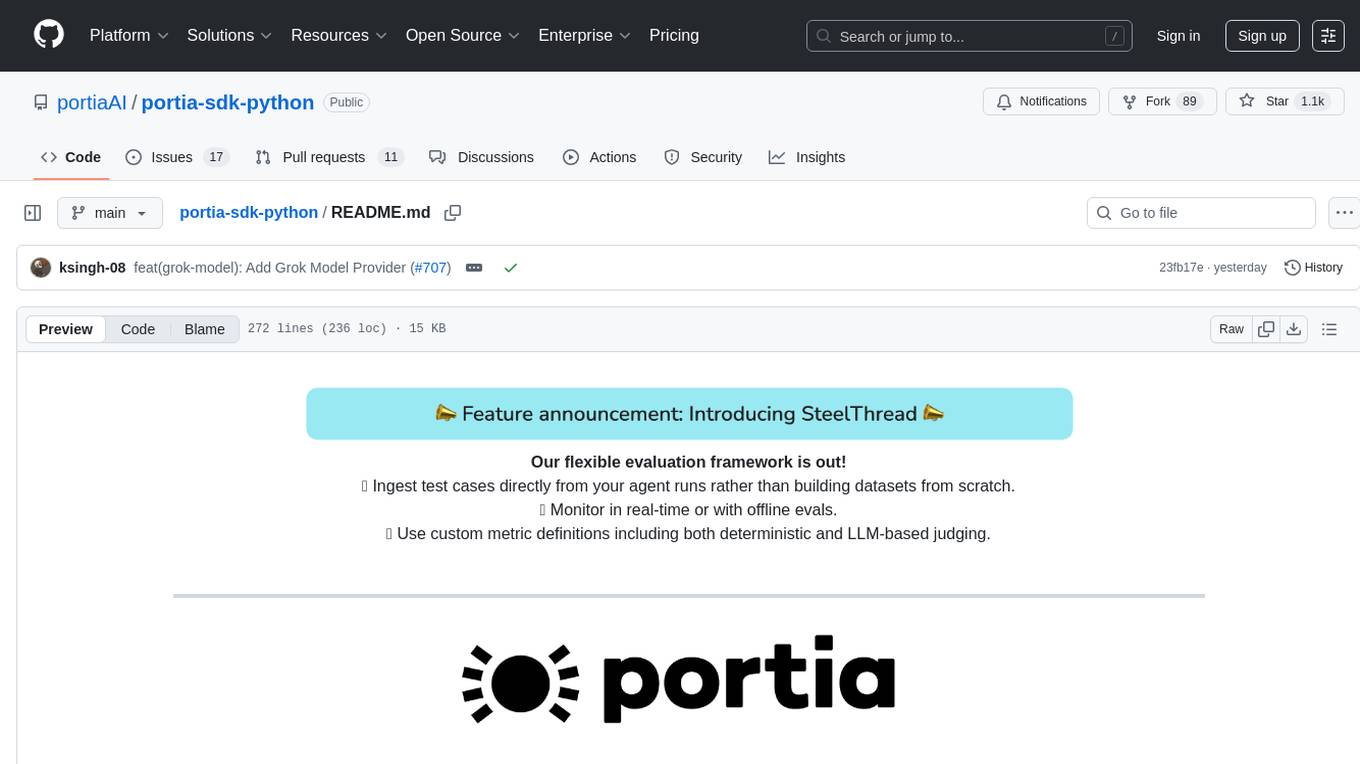
portia-sdk-python
Portia AI is an open source developer framework for predictable, stateful, authenticated agentic workflows. It allows developers to have oversight over their multi-agent deployments and focuses on production readiness. The framework supports iterating on agents' reasoning, extensive tool support including MCP support, authentication for API and web agents, and is production-ready with features like attribute multi-agent runs, large inputs and outputs storage, and connecting any LLM. Portia AI aims to provide a flexible and reliable platform for developing AI agents with tools, authentication, and smart control.

flow-like
Flow-Like is an enterprise-grade workflow operating system built upon Rust for uncompromising performance, efficiency, and code safety. It offers a modular frontend for apps, a rich set of events, a node catalog, a powerful no-code workflow IDE, and tools to manage teams, templates, and projects within organizations. With typed workflows, users can create complex, large-scale workflows with clear data origins, transformations, and contracts. Flow-Like is designed to automate any process through seamless integration of LLM, ML-based, and deterministic decision-making instances.
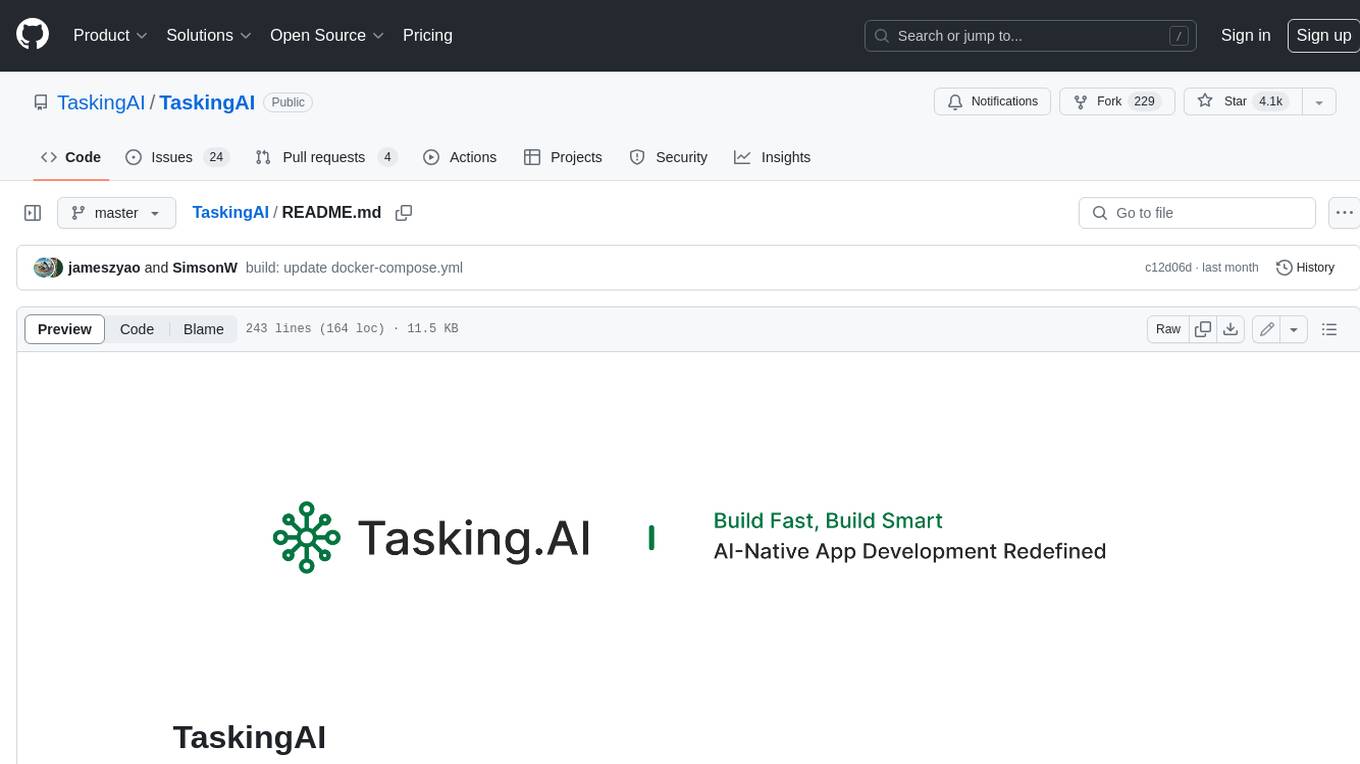
TaskingAI
TaskingAI brings Firebase's simplicity to **AI-native app development**. The platform enables the creation of GPTs-like multi-tenant applications using a wide range of LLMs from various providers. It features distinct, modular functions such as Inference, Retrieval, Assistant, and Tool, seamlessly integrated to enhance the development process. TaskingAI’s cohesive design ensures an efficient, intelligent, and user-friendly experience in AI application development.
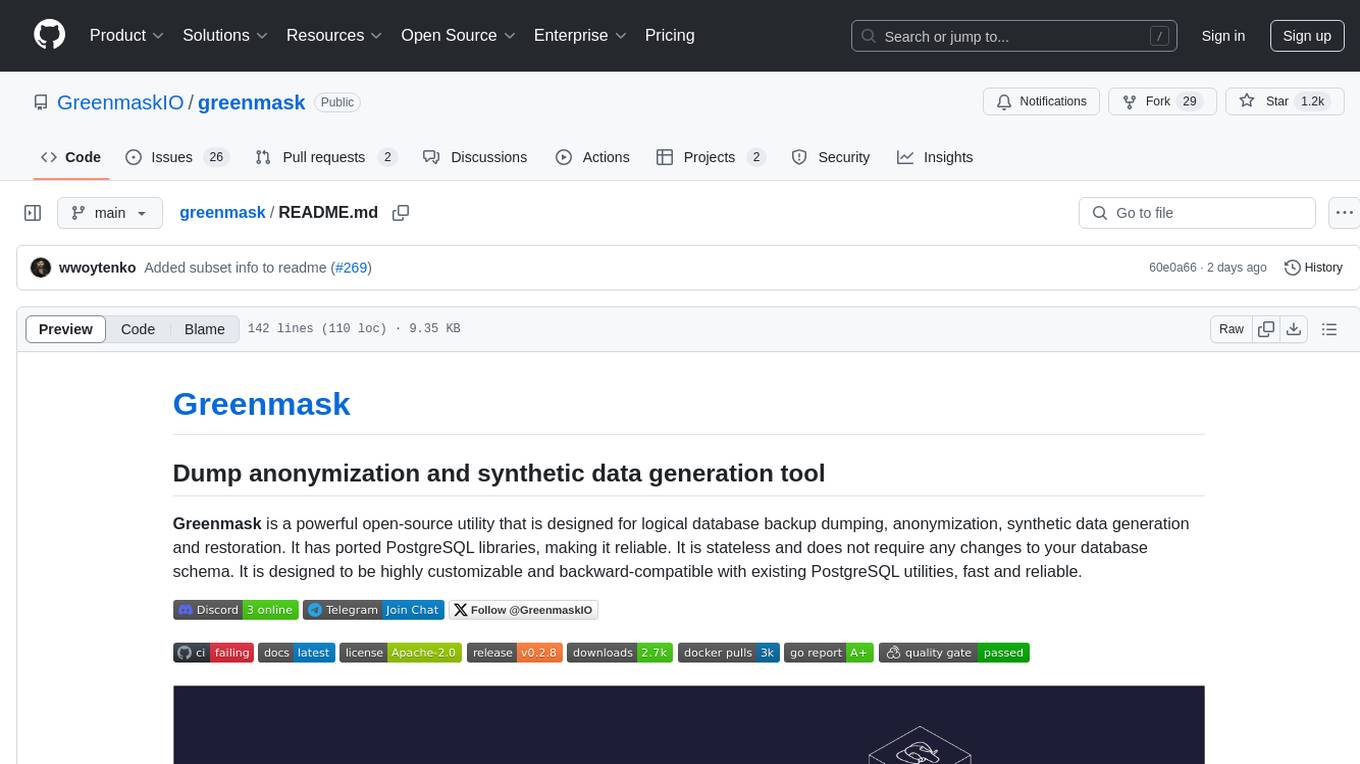
greenmask
Greenmask is a powerful open-source utility designed for logical database backup dumping, anonymization, synthetic data generation, and restoration. It is highly customizable, stateless, and backward-compatible with existing PostgreSQL utilities. Greenmask supports advanced subset systems, deterministic transformers, dynamic parameters, transformation conditions, and more. It is cross-platform, database type safe, extensible, and supports parallel execution and various storage options. Ideal for backup and restoration tasks, anonymization, transformation, and data masking.
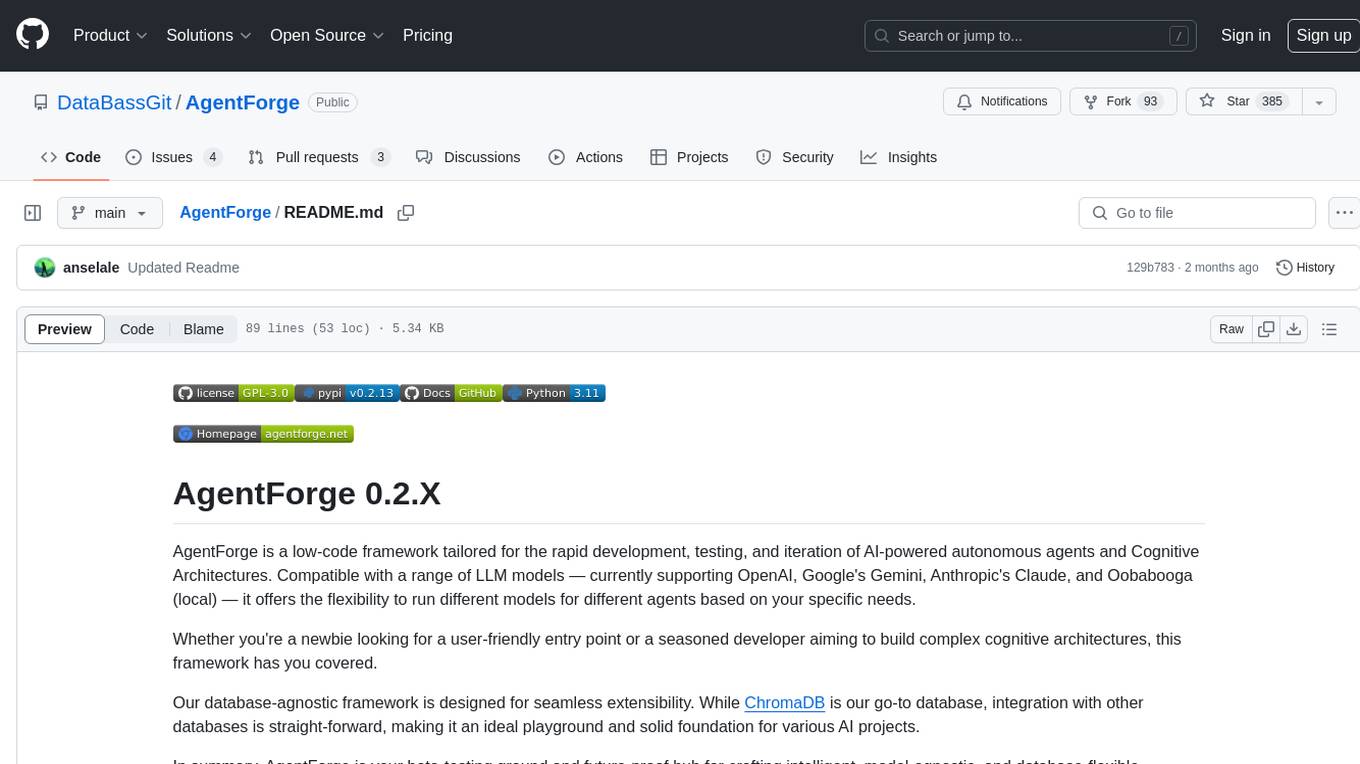
AgentForge
AgentForge is a low-code framework tailored for the rapid development, testing, and iteration of AI-powered autonomous agents and Cognitive Architectures. It is compatible with a range of LLM models and offers flexibility to run different models for different agents based on specific needs. The framework is designed for seamless extensibility and database-flexibility, making it an ideal playground for various AI projects. AgentForge is a beta-testing ground and future-proof hub for crafting intelligent, model-agnostic autonomous agents.
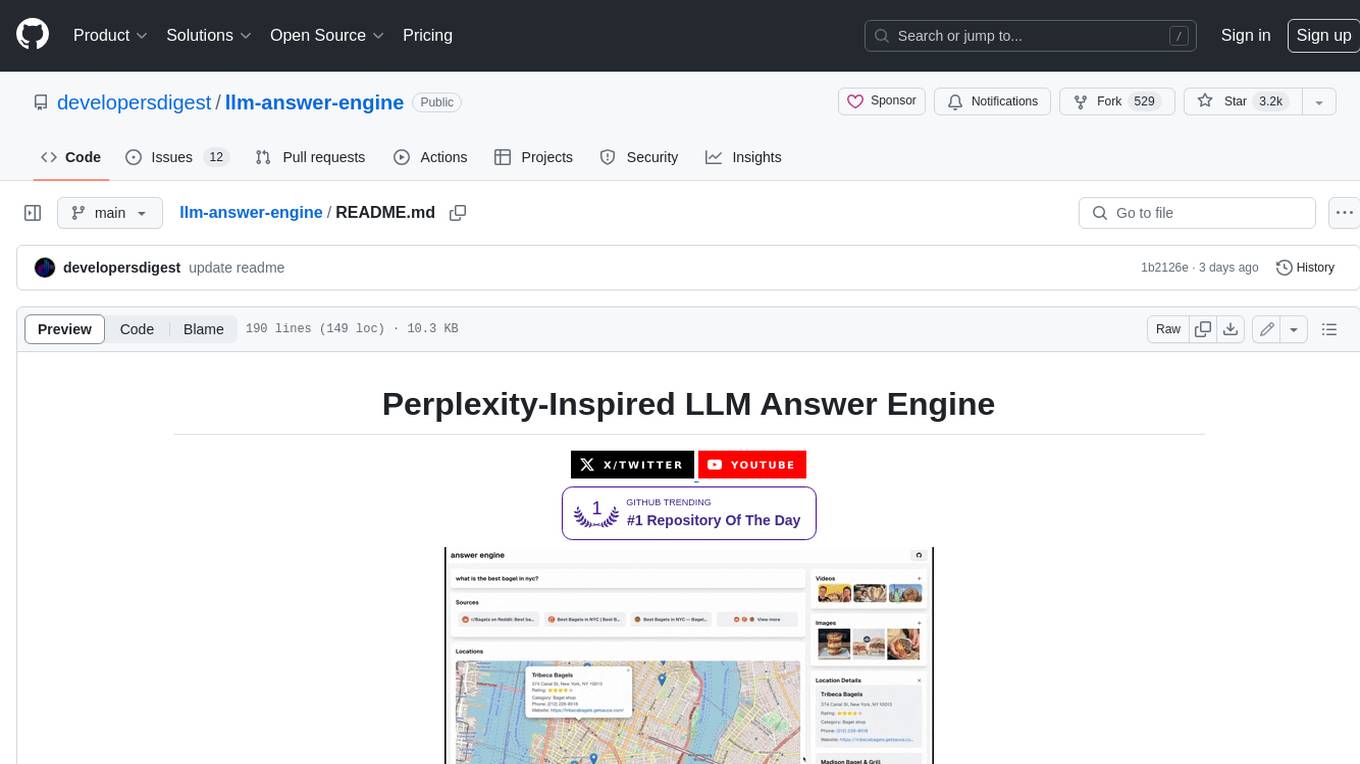
llm-answer-engine
This repository contains the code and instructions needed to build a sophisticated answer engine that leverages the capabilities of Groq, Mistral AI's Mixtral, Langchain.JS, Brave Search, Serper API, and OpenAI. Designed to efficiently return sources, answers, images, videos, and follow-up questions based on user queries, this project is an ideal starting point for developers interested in natural language processing and search technologies.
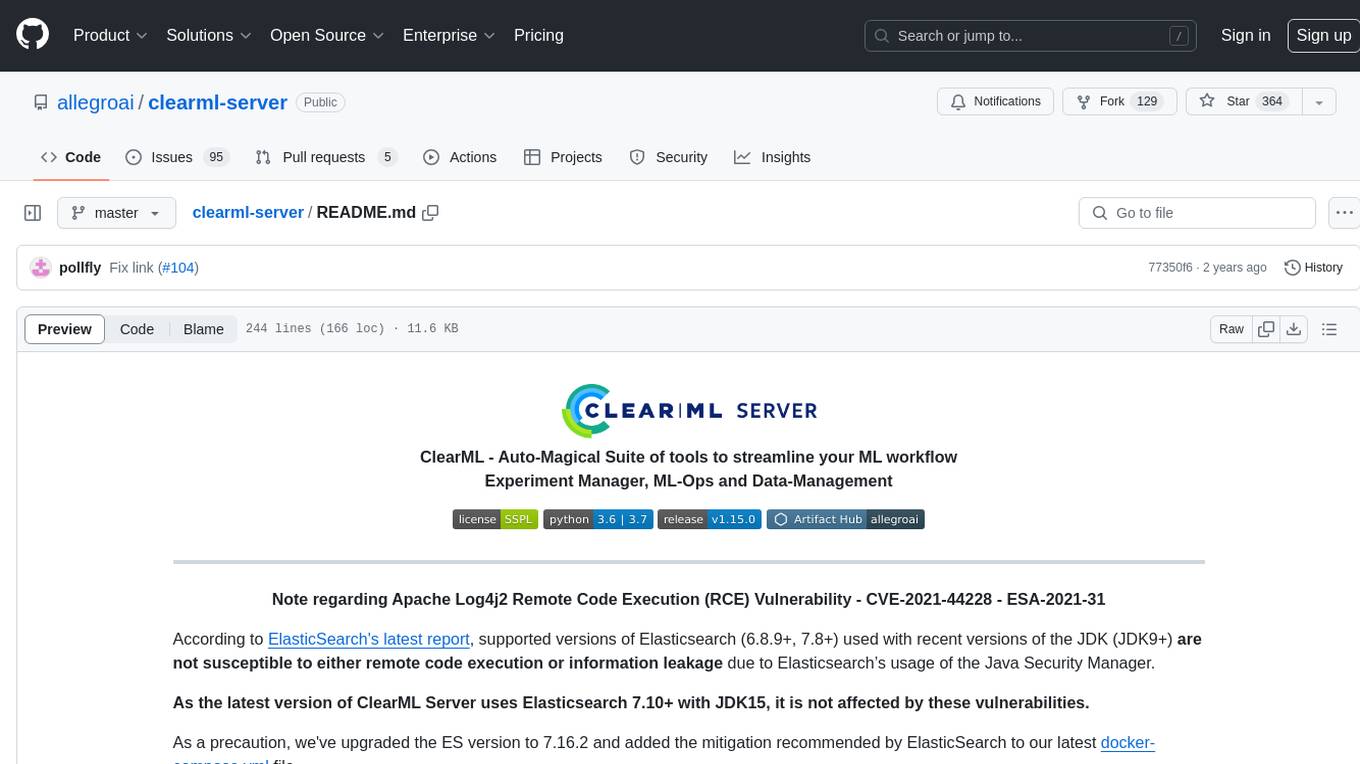
clearml-server
ClearML Server is a backend service infrastructure for ClearML, facilitating collaboration and experiment management. It includes a web app, RESTful API, and file server for storing images and models. Users can deploy ClearML Server using Docker, AWS EC2 AMI, or Kubernetes. The system design supports single IP or sub-domain configurations with specific open ports. ClearML-Agent Services container allows launching long-lasting jobs and various use cases like auto-scaler service, controllers, optimizer, and applications. Advanced functionality includes web login authentication and non-responsive experiments watchdog. Upgrading ClearML Server involves stopping containers, backing up data, downloading the latest docker-compose.yml file, configuring ClearML-Agent Services, and spinning up docker containers. Community support is available through ClearML FAQ, Stack Overflow, GitHub issues, and email contact.
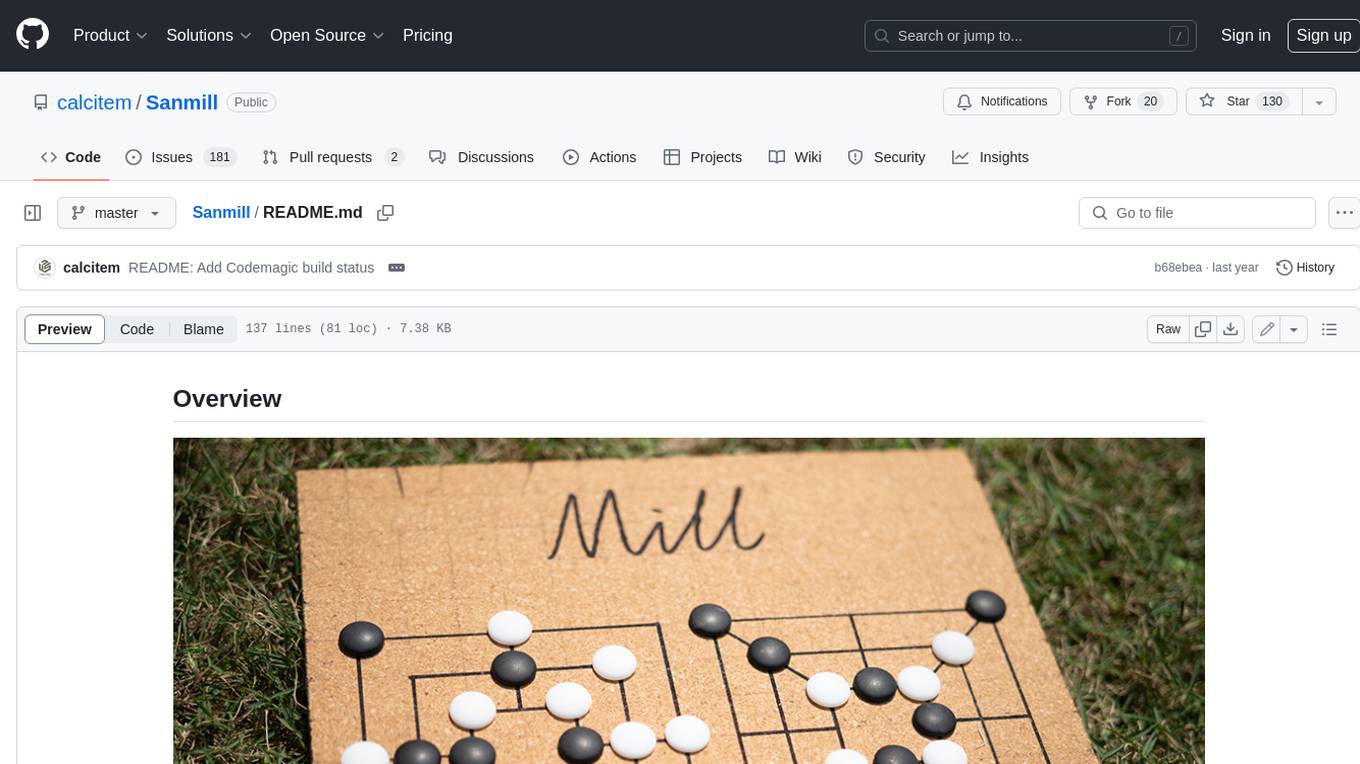
Sanmill
Sanmill is a free, powerful UCI-like N men's morris program with CUI, Flutter GUI and Qt GUI. Nine men's morris is a strategy board game for two players dating at least to the Roman Empire. The game is also known as nine-man morris , mill , mills , the mill game , merels , merrills , merelles , marelles , morelles , and ninepenny marl in English.
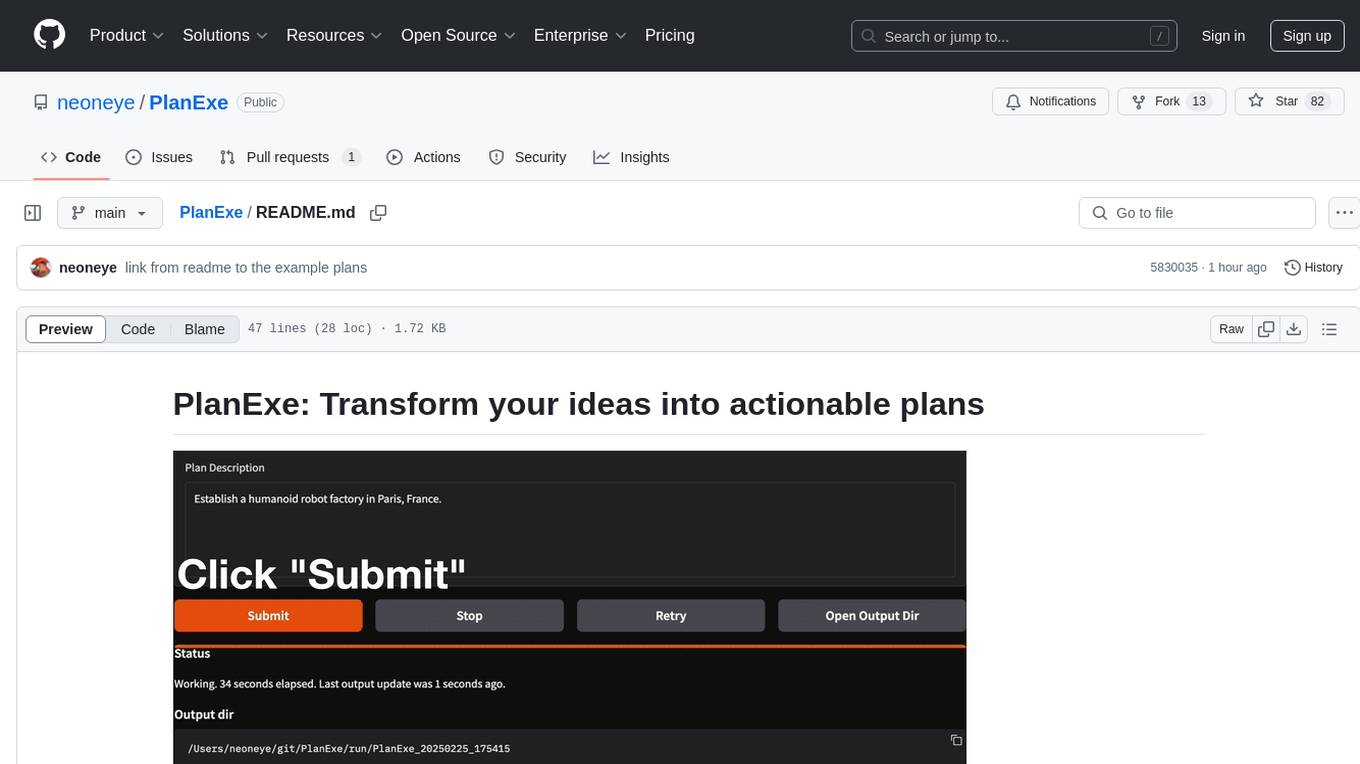
PlanExe
PlanExe is a planning AI tool that helps users generate detailed plans based on vague descriptions. It offers a Gradio-based web interface for easy input and output. Users can choose between running models in the cloud or locally on a high-end computer. The tool aims to provide a straightforward path to planning various tasks efficiently.
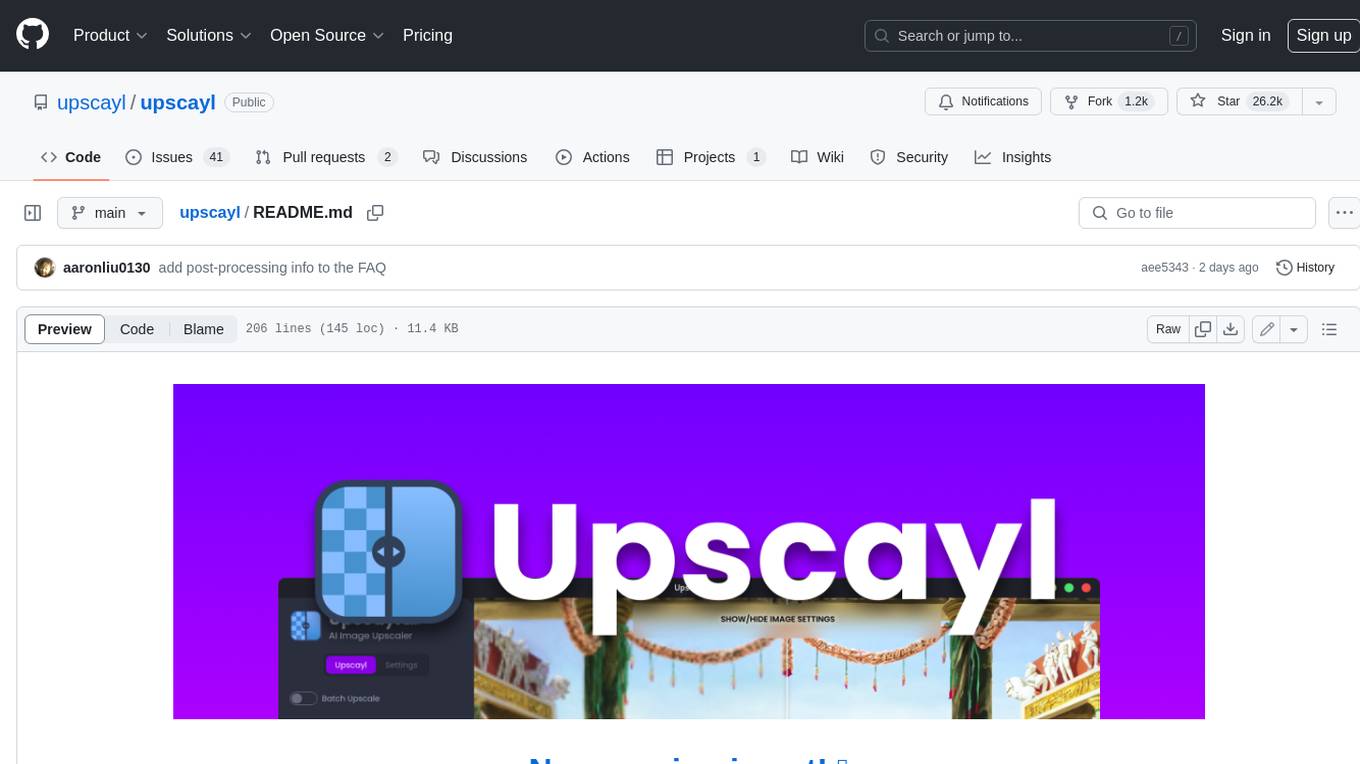
upscayl
Upscayl is a free and open-source AI image upscaler that uses advanced AI algorithms to enlarge and enhance low-resolution images without losing quality. It is a cross-platform application built with the Linux-first philosophy, available on all major desktop operating systems. Upscayl utilizes Real-ESRGAN and Vulkan architecture for image enhancement, and its backend is fully open-source under the AGPLv3 license. It is important to note that a Vulkan compatible GPU is required for Upscayl to function effectively.
